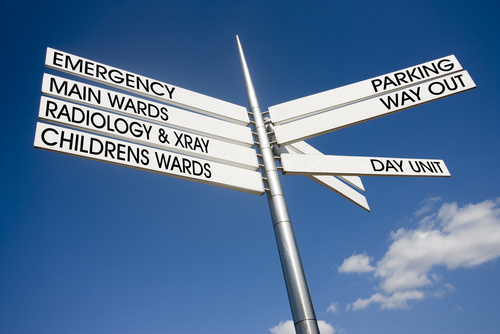How to Solve Hospital Parking Woes

Most hospitals find themselves caught between a rock and a hard place when it comes to having enough parking. As the demand for medical services grows, many hospitals respond by expanding their facility to offer more beds and provide more care options.
These new facilities frequently take up land that was originally designated for parking, so inevitably the parking supply decreases at the same time the demand increases. In an effort to triage this, most hospitals prioritize parking for their patients first and then for their doctors. Unfortunately nurses, technicians and other staff are usually prioritized the lowest, even though many of them have to drive long distances to get to work.
So what are the choices for the hospital and their employees?
- Encourage mass transit and ride-sharing. These options should always be promoted, but they simply are not practical for those who don’t live near transit lines or coworkers with the same schedule.
- Park on nearby streets. This isn’t sustainable as it creates tension with their neighborhood. Often the local community will move to resident-only parking stickers, taking away this option.
- Lease an offsite parking lot. In most urban areas such locations are usually not close to the hospital, so a shuttle service is needed, which makes the commute time even worse for the employees and adds operating cost to the hospital’s budget. In an era where skilled talent is highly valued, this negatively impacts recruiting and retention.
- Build a conventional parking garage. Assuming the hospital even has the land for this, conventional garages are becoming increasingly expensive. In space constrained sites, they cannot be built efficiently and may not even be able to meet the required capacity.
Fortunately, there is another option that solves this dilemma: Automated parking lifts.
While very common in Europe and Asia for the past 30 years automated parking lifts are just now coming into the mainstream in the US. There are a wide range of technology options available, including:
- Simple “Stacker” designs. These are inexpensive but the downside is when you need to retrieve a car on the top you have to drive out the car(s) on the bottom. This is most common in a valet operation.
- “Puzzle Lift” designs. These systems are relatively inexpensive and highly modular. They can be built 2-5 levels high on a surface lot and can be “wrapped” to look attractive. Or, they can be put inside a building as long as there is 12’ or more of height clearance. The big benefit of the “Puzzle Lift” over the “Stacker” is every vehicle space is accessible without moving another car. The machine does all the work by sliding spaces left or right and raising or lowering car spaces from above. These systems work particularly well for employees who self-park in their assigned spaces and use a fob to retrieve their space.
- “Fully Automated” designs. These systems allow the user to park a car in a parking bay, much like they would in their garage at home. Once they park their car is raised or lowered into a parking space that can be up to 20 levels high. These systems are user friendly and offer the most efficient use of space.
About CityLift Parking
At CityLift Parking, we bring 30 years of automated parking lift experience around the globe to the US. With offices around the country, our automated parking lifts span the full range of product choices. We work closely with our customers to design the best parking layout for them, partner to get their project approved, install the systems, and stand by our products by providing ongoing service. We also offer financing through our banking partners so the capital expenditure can be metered over time.
For more information, visit our website at www.cityliftparking.com or email us at contact@cityliftparking.com .




Comments
There are no comments yet for this item
Join the discussion